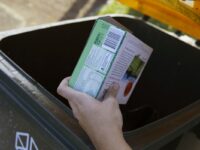A key formula for small business success is planning and sound execution. And that it includes creating a business sustainability plan which encompasses profits, people and the planet.
This trifecta of ingredients can be woven together to create financial, societal and environmental sustainability – giving small-business owners another layer of credibility and nous with their customers and staff.
Take stock of what you are currently doing when it comes to recycling, energy-saving and product material choices. From there, you can begin fine-tuning and tweaking these practices with measurable short term and long term results.
The small-business sustainability plan certainly doesn’t have to be complex, quite the opposite, but time and care need to be invested to understand what is possible for the business and how to maximise the benefits. And you will find that by involving your staff, their involvement and enthusiasm will amplify the outcomes.
Firstly, consider installing a solar system for your office. Then during the staff monthly meetings, it would be an ideal opportunity for you to report to the staff how many kWh of solar were generated by the company’s system and how much money was saved. You can even go one step further and add a solar system monitor display in the office so everyone can see the solar production and savings at any time.
Simple strategies such as installing motion sensors on lights so they turn off when rooms are not being used. This can be done in the powder and meeting rooms – spaces which are not used all the time. It is amazing that you find that these small significant steps culminate in the greatest of impacts.
Another small business sustainable practice is to review any warehouse procedures and eliminate as much single-use plastic packaging as possible. Look for more responsible packaging options. For non-food shipments, reuse boxes as much as possible and put a nice bright paper label on them saying the company is reusing packaging materials.
This could be the perfect time to review product packaging and substitute plastic packaging for more readily biodegradable options. Do your research and you will be surprised there is a gamut of products that are still cost-efficient and will be a sound sustainable alternative.
Another simple strategy is to set up paper recycling stations around the office to capture that paper waste and recycle it. Set up recyclables bins in kitchen areas to capture plastic packaging. Regularly report back to staff on how that is being managed, are they doing the right thing or ways they can improve on it. It is also important to ensure printer cartridges are recycled.
The staff play a pivotal role in the success (or failure) of the sustainability plan. Present the staff annual reports on the company’s plastic footprint status from last year and then this year. This could also include the power consumed from the grid, last year versus this year. It is important to set some goals for the staff to reduce their plastic and power usage when in the office.
With every doable action you do in your small business, you may inspire customers, stakeholders and staff to emulate these practices at home or in their own small business.
Lead by example!















